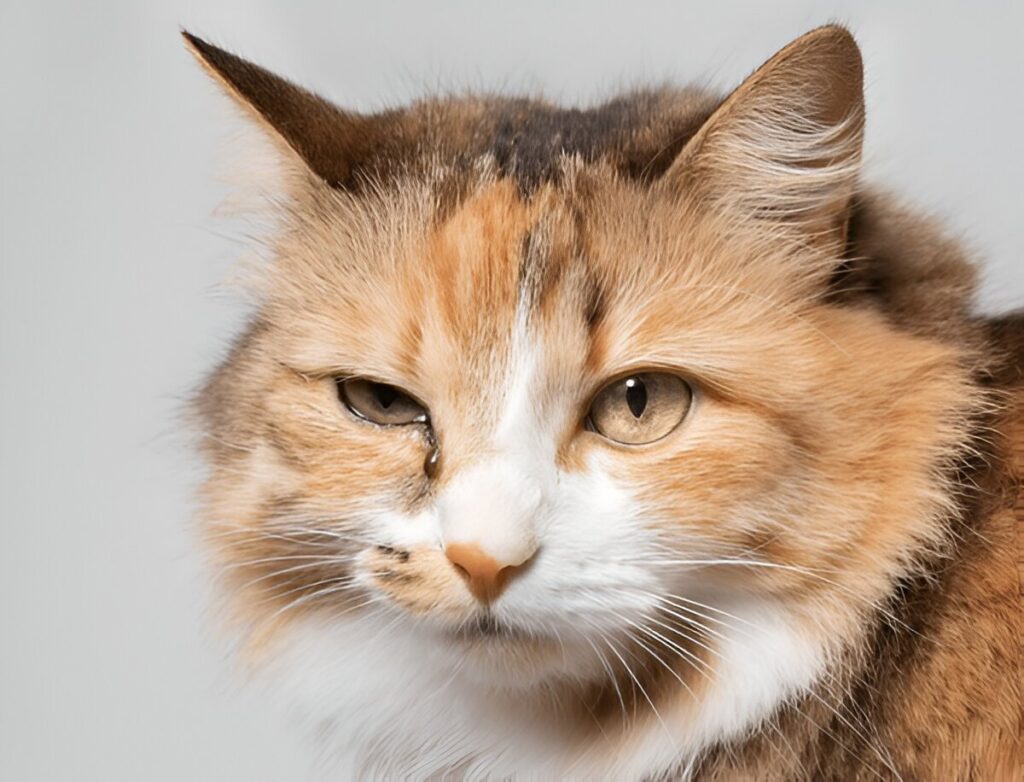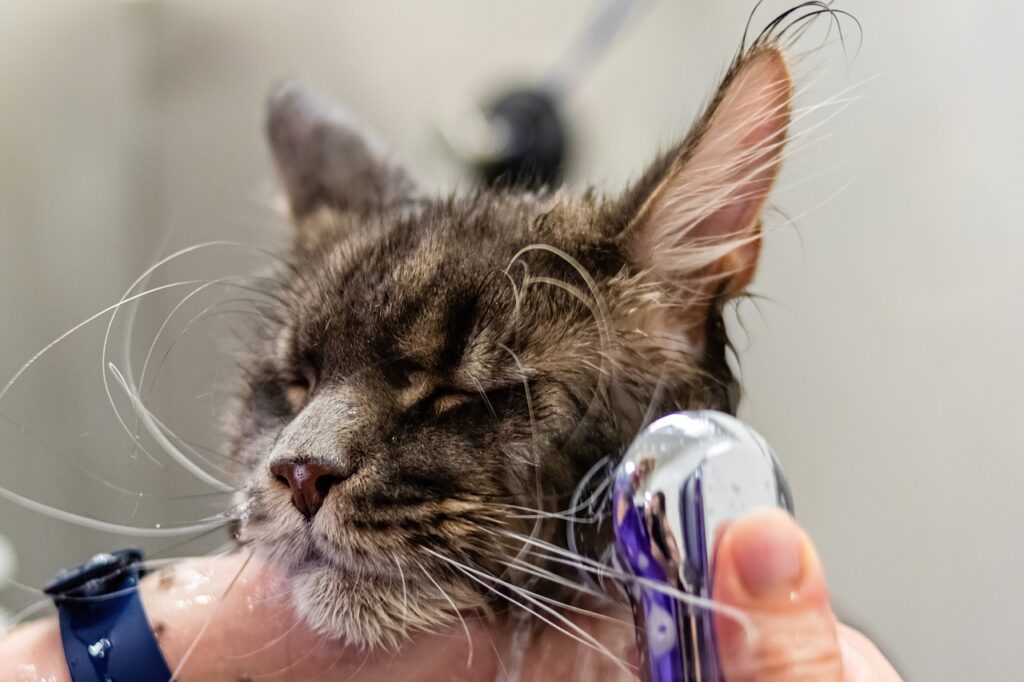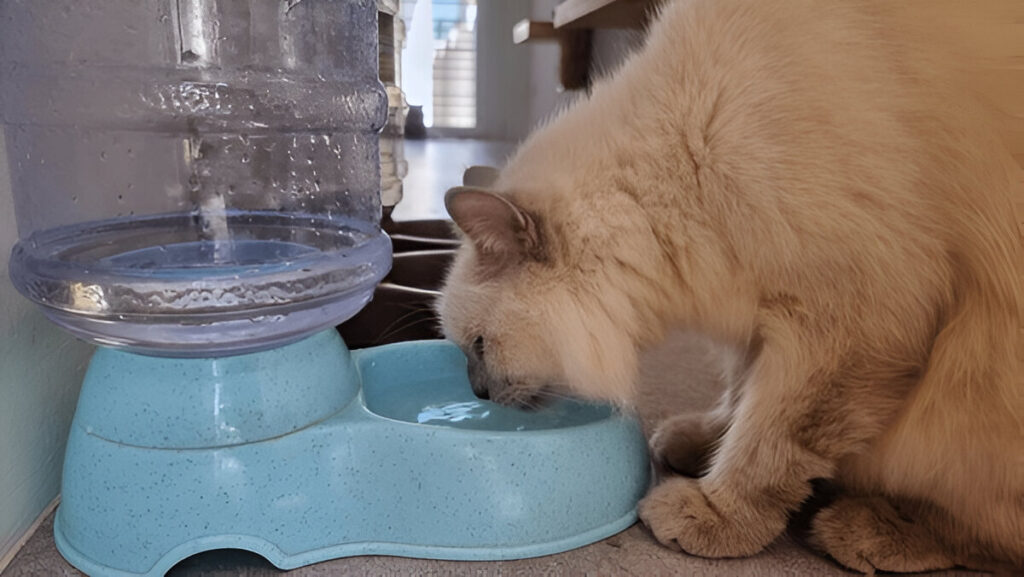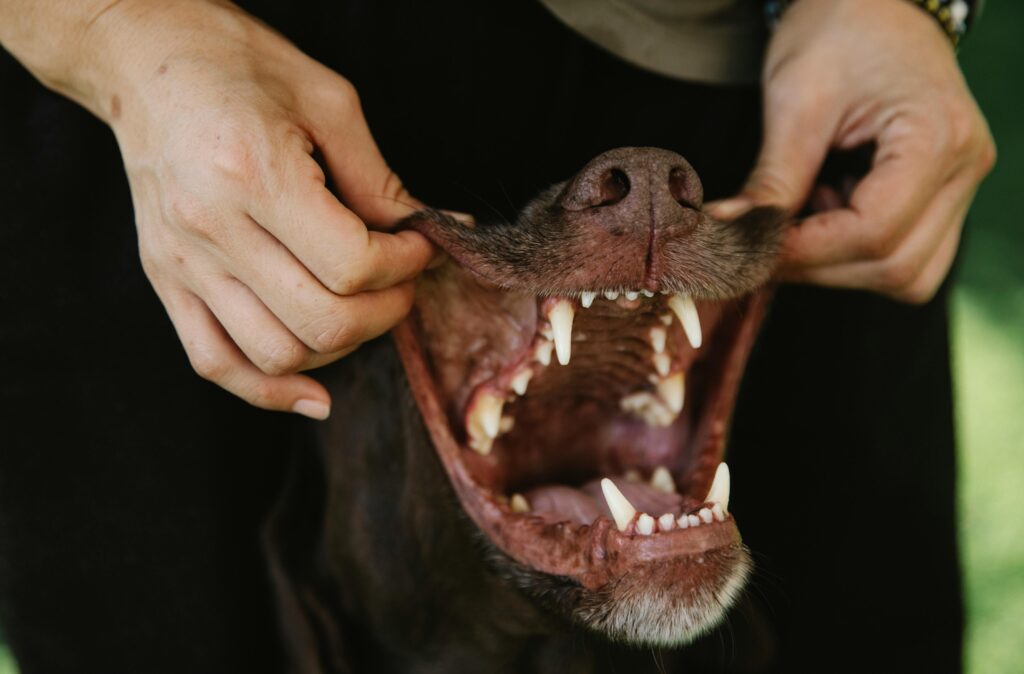Cats are known for their expressive eyes, but what happens when those eyes become red, swollen, or discharge-filled? If you’ve noticed your feline friend pawing at their face or squinting excessively, they might be suffering from an eye infection. While some cases may require veterinary intervention, there are several home remedies for cat eye infection that can provide relief and promote healing.
In this article, we’ll explore the common causes of eye infections in cats, outline safe and effective natural treatments, and guide you through administering these remedies with care. Whether you’re a seasoned pet owner or new to cat care, this comprehensive guide will equip you with the knowledge to address your cat’s discomfort effectively.
What Causes Eye Infections in Cats?

Before diving into solutions, you should understand why cats develop eye infections. When you understand the cause, you can better treat and also prevent recurrence. Cat eye infections are not only painful for your pet but can also be indicative of other health issues. What follows are the most common causes of cat eye infections and a closer examination of how each works to cause the problem.
Common Causes
1. Bacterial Infections
Bacterial infections are one of the leading causes of eye infections in cats. Bacterial infections occur when disease-causing bacteria like Chlamydia felis or Staphylococcus infect the eye. Bacteria adore damp places, and the eyes are an easy target.
- How It Happens: Bacterial infections typically follow a viral infection that has weakened the immune system or through direct contact with contaminated surfaces. For example, sharing grooming tools or food and water bowls with an infected cat can spread bacteria.
- Symptoms to Watch For: Bacterial infections are marked by thick, yellow, or green discharge. The eyes will also be red and swollen, and your cat will likely show signs of pain or discomfort.
2. Viral Infections
Feline herpesvirus (FHV) and calicivirus are viruses that are highly contagious and commonly result in eye infections. These viruses are highly transmissible in multi-cat homes or shelters.
- How It Happens: Viral infections will target the respiratory system first, causing sneezing, runny nose, and watery eyes. Secondary bacterial infections can develop over time, complicating the condition. Kittens and older cats are more susceptible due to weaker immune systems.
- Signs to Watch For: Watery eyes, frequent blinking, and clear or mucoid discharge are common symptoms. Corneal ulcers occur in a few cats and require urgent veterinary attention.
3. Allergies
Cats, like people, can have allergies that cause their eyes to itch. Environmental allergens such as pollen, dust mites, mold spores, cigarette smoke, or cleaning products are usually the cause.
- How It Happens: When a cat comes in contact with an allergen, the immune system overreacts and inflames the eyes. This may result in itching, redness, and excessive tearing.
- Signs to Look For: The allergic reaction creates more clear, runny discharge than thick, colored discharge. You may also notice your cat rubbing their face on furniture or scratching at their eyes.
4. Foreign Bodies
Cats are curious creatures, and their curiosity often lands them in trouble. Foreign bodies like dirt, grass seeds, sand, or small particles can become lodged in the eye, causing inflammation and infection.
- How It Happens: Outdoor cats are more susceptible to this because they’re exposed to various environmental threats. Indoor cats can still have problems if indoor items like lint or hair manage to get under the eyelid.
- Signs to Watch For: Sudden onset of squinting, pawing at the eye, or redness suggests a foreign body. If not treated, corneal scratches will most likely occur, with a higher risk of infection.
5. Trauma
Eye trauma is another major source of infection. Puncture, scratch, or blunt trauma can damage the eye’s sensitive tissues and provide a portal of entry for microbes.
- How It Happens: Trauma typically occurs in fights with other animals, accidents (such as falling from a height), or rough play. Cats with protruding eyes (e.g., Persian cats) are more prone because their eyes are less protected by the bony orbit.
- Signs to Watch For: Redness, swelling, and refusal to open the affected eye are clear signs of trauma. In severe cases, you might see bleeding or an openly damaged eyeball.
6. Underlying Medical Conditions
Certain systemic diseases predispose cats to ocular infections. For instance, feline immunodeficiency virus (FIV), feline leukemia virus (FeLV), and diabetes weaken the immune system, thereby making cats more prone to infections.
- How It Happens: An impaired immune system struggles to fight off pathogens, so opportunistic bacteria or viruses more easily establish themselves. Chronic illnesses like dry eye syndrome (keratoconjunctivitis sicca) also predispose to infections.
- Signs to Watch For: Recurring eye infections despite therapy can point to an underlying systemic illness. Other indicators are weight loss, lethargy, or a change in appetite.
Symptoms to Watch Out For
Recognizing the symptoms ahead of time can avoid further complications. What follows is a rundown of the most common cat eye infection symptoms:
- Excessive Tearing or Discharge: A normal cat has minimal tear fluid. If you notice frequent tearing or abnormal discharge clear, yellow, or green it’s a sign that there is something wrong.
- Redness or Swelling Near the Eye: Redness of the conjunctiva (the reddish tissue that covers the eyelids) is a textbook indication of infection. The surrounding area may also be swollen or inflamed.
- Squinting or Keeping the Eye Closed: Cats instinctively close their eyes to protect them from further irritation. Excessive squinting indicates that the cat is painful or uncomfortable.
- Pawing or Rubbing the Involved Eye: Chronic pawing at the eyes is a sign of itchiness or irritation. Be cautious, as this can further worsen the condition or introduce more contaminants.
- Cloudiness or Corneal Appearance Changes: A cloudy or opaque cornea can be a sign of corneal ulcers or scarring. This symptom requires immediate veterinary care to prevent permanent loss of vision.
Most Effective Home Remedies for Cat Eye Infection

Treating your cat’s eye infection at home requires patience, caution, and a focus on safety. Following are five time-tested home remedies for cat eye infection that are gentle yet effective. These natural remedies can soothe discomfort, reduce inflammation, and promote healing. Ensure that your hands and tools are clean when applying any remedy, and monitor your cat closely for improvement or exacerbating symptoms.
1. Saline Solution: Gentle Cleansing
A saline solution is one of the simplest and most gentle solutions to clean your cat’s eyes without causing any irritation. It is quite similar in nature to natural tears and effortlessly removes dirt, debris, or dried discharge from the corners of the eyes.
How to Prepare:
- Mix 1 teaspoon of non-iodized salt and 1 cup of distilled water in a sterile bowl.
- Boil the solution to sterilize it, and let it cool completely to room temperature. Store unused quantities in an airtight container in the refrigerator for up to 24 hours.
Application:
- Soak a clean cotton ball or pad in the saline solution.
- Gently wipe to clear discharge or crust from the eye corners, moving outward to avoid the spread of contagion.
- Use a clean cotton ball for each eye to avoid cross-contamination.
Why It Works: Saline solutions are isotonic, meaning equal to the natural pH and salt level of tears. This makes them safe and soothing for sensitive eye tissue.
2. Chamomile Tea: Soothing Relief
Chamomile tea is renowned for its anti-inflammatory and antibacterial qualities and is an excellent choice for soothing inflamed eyes. It’s mild and won’t aggravate even sensitive cats further.
How to Prepare:
- Steep one chamomile tea bag in 1 cup of hot water for 5 minutes.
- Throw away the tea bag and allow the liquid to cool completely. Strain the tea if necessary to remove loose particles.
Application:
- Dip a clean cloth or cotton pad into the cooled chamomile tea.
- Gently dab the soaked cloth around the affected eye, avoiding direct contact with the eyeball.
- Use 2–3 times daily until symptoms improve.
Why It Works: Chamomile contains chemicals like apigenin and luteolin with soothing and antimicrobial qualities. These help reduce redness, swelling, and bacterial load.
3. Warm Compress: Reducing Swelling
A warm compress is a simple and effective way of reducing swelling, loosening dried discharge, and soothing your cat’s eyes. Heat draws more blood into the area, healing the eyes sooner.
How to Prepare:
- Soak a clean washcloth or soft cloth in lukewarm water (not hot).
- Wring out excess moisture to prevent dripping.
Application:
- Hold the warm compress gently against the affected eye for 5–10 minutes.
- Repeat this process 2–3 times daily, ensuring the cloth remains warm throughout the session.
Why It Works: Heat makes blood vessels expand, which enhances circulation and reduces inflammation. It also thins out dried mucus, making it easier to wipe off.
4. Coconut Oil: Natural Antimicrobial Properties
Coconut oil includes lauric acid, an element with potent antimicrobial and antibacterial properties. Applied gently, it’s able to combat bacterial growth while hydrating the skin surrounding the eye.
How to Apply:
- Apply only organic, virgin coconut oil for purity and safety.
- Take a little coconut oil on a clean cotton swab.
- Apply the oil lightly around the outer corners of the eye, but not directly on the eyeball or inner eyelids.
Why It Works: Coconut oil has lauric acid that disrupts the cell membrane of the bacteria inflicting damage, reducing their ability to thrive. Further, coconut oil’s moisturizing effect soothes dry, inflamed skin around the eye.
5. Green Tea: Anti-Inflammatory Benefits
Green tea contains antioxidants and anti-inflammatory compounds that can reduce swelling and promote faster healing. Its mild astringent property also naturally cleans the area around the eye.
Preparation:
- Steep one green tea bag in 1 cup of hot water for 3–5 minutes.
- Take out the tea bag and allow it to cool completely. You can also refrigerate it for extra soothing benefits.
Application:
- Place the cooled tea bag over the closed eyelid for 5–10 minutes.
- Alternatively, soak a clean cloth in the cooled green tea and dab it around the eye area gently.
Why It Works: Green tea contains abundant catechins, which are potent antioxidants that combat oxidative stress and inflammation. Green tea also possesses natural tannins that impart a mild cleansing action to it without irritating sensitive tissues.
Additional Tips for Using Home Remedies
Although these home remedies for cat eye infection are safe and effective if used correctly, the following tips are noteworthy:
- Wash Your Hands Always: Wash your hands before handling your cat’s eyes or when making remedies to avoid introducing new contaminants.
- Clean Tools: Ensure all cloths, cotton balls, and applicators are clean and free of lint or fibers to avoid causing irritation to the eye.
- Monitor Progress: Observe improvement or worsening symptoms. If there is no improvement after 48–72 hours, consult veterinary care.
- Avoid Harsh Ingredients: Never use human medication, essential oils, or alcohol-based products around your cat’s eyes, as they will cause severe irritation or harm.
By incorporating these home remedies into your cat’s care regimen, you can naturally and safely treat mild eye infections. Remember, however, that chronic or severe infections must be attended to by a veterinary specialist to rule out underlying diseases.
Step-by-Step Guide to Administering Home Remedies

Administering home remedies for cat eye infection safely ensures efficacy and comfort for your cat. Cats are sensitive and may resist treatment, so it’s essential to move with care and patience. Follow the step-by-step guide below to prepare and administer remedies appropriately while keeping your cat relaxed and cooperative.
Preparing the Remedies
The first step in treating your cat’s eye infection is the clean and safe preparation of all the remedies. Contamination or wrong preparation can also worsen the condition or cause additional irritation.
1. Use Clean Tools and Containers
- Wash your hands well before handling any of the ingredients or tools.
- Prepare and apply remedies using clean sterilized containers, cotton balls, cloths, or applicators. Do not reuse materials unless washed and dried well.
- If reusable materials such as washcloths are used, wash them in fragrance-free detergent to prevent the addition of irritants.
2. Make Sure All Ingredients Are Pet-Safe
- Make sure any ingredients you use are safe for cats. For example, avoid tea blends that contain other flavors, oils, or herbs that could be toxic.
- Use natural, raw ingredients where possible. For example, use organic coconut oil and distilled water to eliminate the risk of impurities.
- Never apply human medicines, alcohol-based products, or essential oils, which can harm your cat’s delicate eye tissues.
3. Prepare Remedies in Advance
- Some remedies, like saline solution or brewed teas, may be made ahead and stored in a clean, covered container in the refrigerator for up to 24 hours. Label the container with the contents and date.
- Before each application, warm the remedy to room temperature or slightly warm to avoid shocking your cat with cold liquids.
Applying Them Safely
With your remedies ready, it is now time for application. The key to success is minimizing stress for your cat and ensuring the treatment is effectively administered.
1. Choose a Quiet Spot
- Find a quiet, well-lit place to work on your cat so that you are not distracted.
- Have all your remedies and equipment ready beforehand to avoid interruptions midway through the process.
2. Gently Restrain Your Cat
- Put a soft towel or blanket around your cat to prevent sudden movement. Leave the head clear but wrap the body to restrict squirming.
- Alternatively, sit on the ground with your cat in between your legs, with one hand holding their head still.
3. Approach Slowly and Reassuringly
- Speak to your cat using a soft, reassuring voice to help them feel calm.
- Avoid any sudden movements or attempts at forcing their eyelids open, as this will lead to increased tension.
4. Apply the Remedy with Caution
- Depending on the remedy, follow the specific application instructions outlined above:
- For saline solution or chamomile tea, soak a cotton ball or pad in it and carefully wipe away discharge or soothe the area.
- For warm compresses, place the damp washcloth over the eye for 5–10 minutes, rewetting as needed to maintain warmth.
- For coconut oil, apply a thin layer around the outer edges of the eye with a cotton swab.
- To use green tea, place the cooled tea bag over the closed eyelid or gently dab the area with a damp cloth.
- Be careful not to touch the eyeball itself unless directed by a veterinarian.
5. Reward Positive Behavior
- Reward your cat with a favorite treat, toy, or affectionate petting once treatment is done. This creates positive associations and makes future treatments easier.
- Praise your cat verbally to promote cooperation.
Further Tips for Success
- Be Consistent: Apply the chosen remedy 2–3 times daily, as directed, until symptoms improve. Skipping treatments can delay healing.
- Monitor for Allergic Reactions: Observe your cat closely after each application for any signs of allergic reactions such as increased redness, swelling, or pain. Discontinue treatment immediately if any issues occur and consult your veterinarian.
- Keep Records: Track your cat’s improvement by noting reduction in symptoms (e.g., less discharge, reduced redness). This will be valuable information should veterinary consultation become necessary in the future.
Follow these steps confidently and successfully administer home remedies for cat eye infection. Remember that your cat’s comfort and safety are the primary issues. With careful gentleness and persistence, most minor infections will begin improving within a few days. However, if symptoms persist or worsen, do not hesitate to consult your vet for further consultation.
When to See a Veterinarian
Even though home remedies for feline eye infection can treat mild cases effectively, it is essential to know when professional attention by a veterinarian is necessary. Some eye infections are signs of underlying health conditions or can get worse into worse conditions if not attended to. Early treatment not only alleviates your cat of discomfort but also prevents potential long-term visual impairments. The following are specific examples that necessitate immediate attention by a veterinarian:
1. The Condition Worsens Despite Treatment
If you’ve been diligently applying home remedies for several days but notice no improvement—or worse, the symptoms worsen—it’s time to consult your veterinarian. Persistent redness, swelling, or discharge suggests that the infection may be resistant to natural treatments or caused by a more serious issue, such as a viral or systemic disease.
- What to Watch For: Growing redness, presence of symptoms in the other eye, or aggravating behavioral changes (e.g., lethargy, loss of appetite).
- Why It’s Important: Unchecked infections can develop rapidly, producing complications such as corneal ulcers or even blindness.
2. Persistent Pain or Behavioral Changes
Cats are masters at hiding pain, but there are certain behaviors that can signal severe discomfort. If your cat is extremely irritable, won’t play, or is always squinting or pawing at their eyes, they may be in severe pain.
- Signs to Watch For: Crying out in pain, not eating, over-grooming the painful spot, or avoiding bright light.
- Why It Matters: Pain is typically a sign of something more serious, such as trauma, foreign material lodged in the eye, or severe infection. A veterinarian can medicate for pain and determine the underlying cause.
3. Ulcers or Cloudiness Appear on the Cornea
Corneal ulcers are open sores on the surface of the eye and are a medical emergency. They may result from scratches, infection, or chemical irritation. Similar to cloudiness or opacification of the cornea indicating damage to the structure of the eye.
- What to Look For: A blue or cloudy coating over the eye, observable scratches, or blood buildup in the cornea. Your cat may also display signs of extreme sensitivity to touch or light.
- Why It Matters: Corneal ulcers could lead to scarring or blindness permanently if left untreated early. A veterinarian may prescribe antibiotics, anti-inflammatory medication, or even surgery in severe cases.
4. Thickens, Turns Bloody or Malodorous
Changes in consistency, color, or odor of eye discharge generally indicate a bacterial or fungal infection that must be treated by a specialist. Yellow or greenish thick discharge generally indicates a bacterial infection, while bloody or smelly discharge might indicate a serious condition, such as an abscess or systemic illness.
- What to Watch For: A discharge that adheres to fur around the eye, mats down the eyelids, or smells strongly.
- Why It’s Important: These signs indicate that the infection has moved past the realm of over-the-counter treatments. A veterinarian can take diagnostic tests to determine the precise pathogen and recommend targeted medicines.
5. Recurrent or Chronic Infections
If your cat develops recurring eye infections despite treatment, there may be an underlying cause of their susceptibility. Feline herpesvirus, allergies, or immune disease may predispose cats to repeated flares.
- What to Look For: Recurring eye infections over a short period of time, even after appearing to have recovered.
- Why It Matters: Infections that occur repeatedly may require constant care methods, such as antiviral medications, allergy tests, or changes in diet. A veterinarian can help determine and treat the underlying cause.
6. Trauma or Foreign Objects
If you believe that your cat has suffered an eye injury—such as scratches in a fight—or when you notice trash lodged in the eye, seek immediate vet care. Attempting to treat foreign matter yourself can cause more damage.
- What to Watch For: Bleeding, swelling, or the appearance of identifiable particles in the eye. Excessive rubbing and pawing at the affected area are also likely.
- Why It Matters: Trauma or foreign objects can result in infections, corneal abrasion, or ruptured eyeballs if not treated recklessly.
Early Diagnosis and Treatment Can Prevent Long-Term Damage
Eyes are delicate organs. Neglected infections or injuries can bring cataclysmic damage to your cat’s vision. Detection at an early stage allows your veterinarian to respond before the complication arises. Depending on the severity of the condition, treatments are:
- Topical Medications: Antifungal or antibiotic eye drops to combat infection.
- Oral Medications: Tablets or liquids for treating systemic infections or alleviating pain.
- Surgical Treatment: In serious cases, surgery may be needed to repair damaged tissues or remove foreign objects.
Trust Your Instincts
You know your cat best. If there is something that doesn’t feel “right” about their demeanor or appearance, don’t hesitate to seek out a professional. Cats rely on their eyes to navigate, hunt, and communicate, so timely treatment is vital to their well-being.
By recognizing these warning signs and acting fast, you can provide your cat with the attention they need to recover and heal. Remember, home remedies for cat eye infection are a great first step—but they’re no substitute for professional veterinary guidance when it’s truly needed.
Preventing Future Eye Infections in Cats
Prevention is always better than cure. Here’s how to safeguard your cat’s eye health:
- Keep their living environment clean and free of irritants.
- Schedule regular vet check-ups to catch potential issues early.
- Monitor interactions with other animals to prevent injuries.
- Provide a balanced diet rich in vitamins A and E for optimal eye health.
Conclusion:
Prioritizing Your Cat’s Eye Health
Eye infections in cats can range from mild annoyances to serious medical concerns. Armed with the right knowledge and tools, you can confidently use home remedies for cat eye infection to alleviate discomfort and support recovery. However, remember that professional guidance is invaluable when dealing with persistent or severe symptoms.
Your cat relies on you to keep their eyes bright and healthy. Start implementing these tips today—and don’t hesitate to reach out to your veterinarian if needed. Together, you can ensure your furry companion enjoys a lifetime of clear vision and happiness.
FAQs About Home Remedies for Cat Eye Infection
Q1: Can I use human eye drops for my cat’s eye infection?
No, human eye drops often contain ingredients unsafe for cats. Stick to vet-recommended products or natural remedies.
Q2: How long does it take for a cat eye infection to heal?
Mild infections typically resolve within 7–10 days with proper care. Severe cases may require weeks of treatment.
Q3: Is it normal for cats to sneeze after an eye infection?
Yes, especially if the infection stems from a viral upper respiratory issue. Persistent sneezing should be evaluated by a vet.
Q4: What foods boost a cat’s immune system to fight infections?
Foods high in omega-3 fatty acids, taurine, and antioxidants—such as fish, eggs, and leafy greens—support overall immunity.
Q5: Are home remedies enough for treating cat eye infections?
For minor cases, yes. However, consult a vet for recurring or severe infections to rule out underlying conditions.
Yuns Legdm is a passionate advocate for pet care and the founder of this website, dedicated to providing valuable information for fellow pet lovers and veterinary professionals worldwide. With a deep love for animals, Yuns created this platform to connect passionate pet owners with expert insights from veterinarians around the globe.
This website grows with you—the passionate pet owners and veterinary experts—creating a trusted space where knowledge, experience, and love for animals come together. Whether you’re seeking advice on pet health, nutrition, or general well-being, this platform is here to support you on your journey of responsible and loving pet care.





